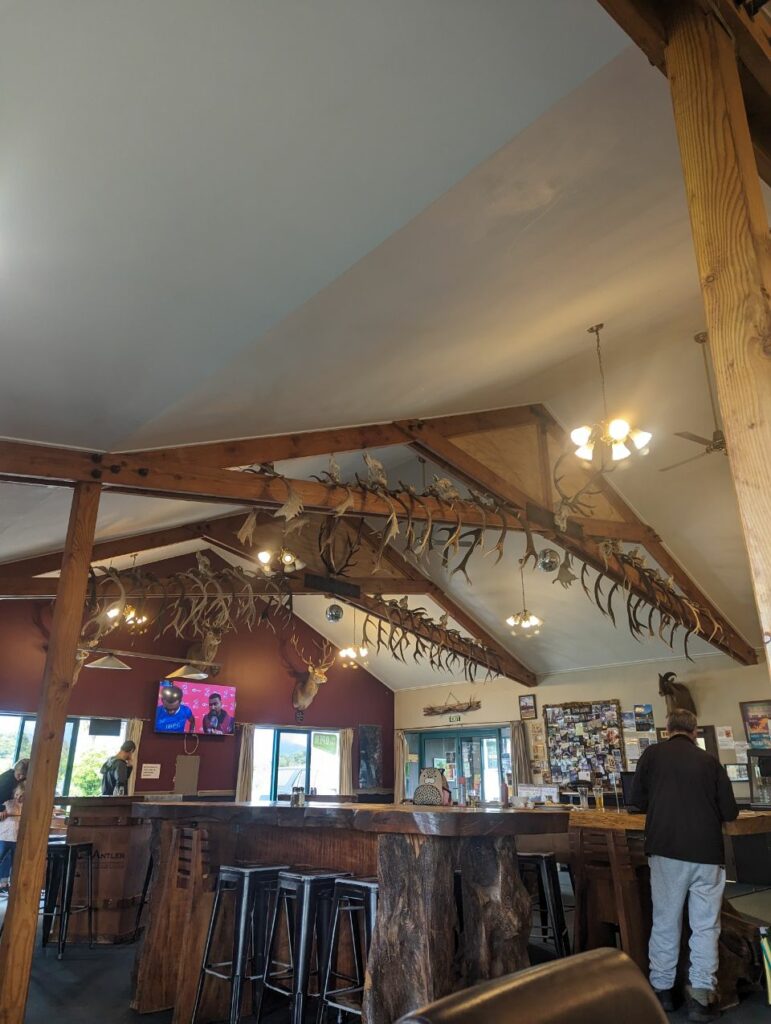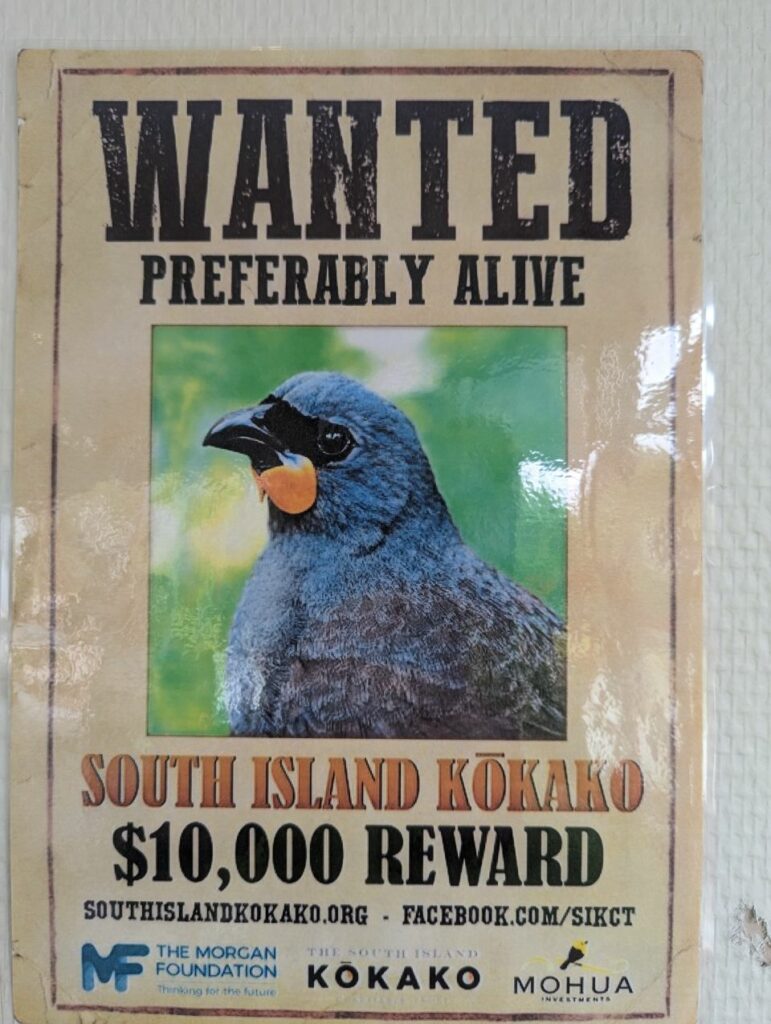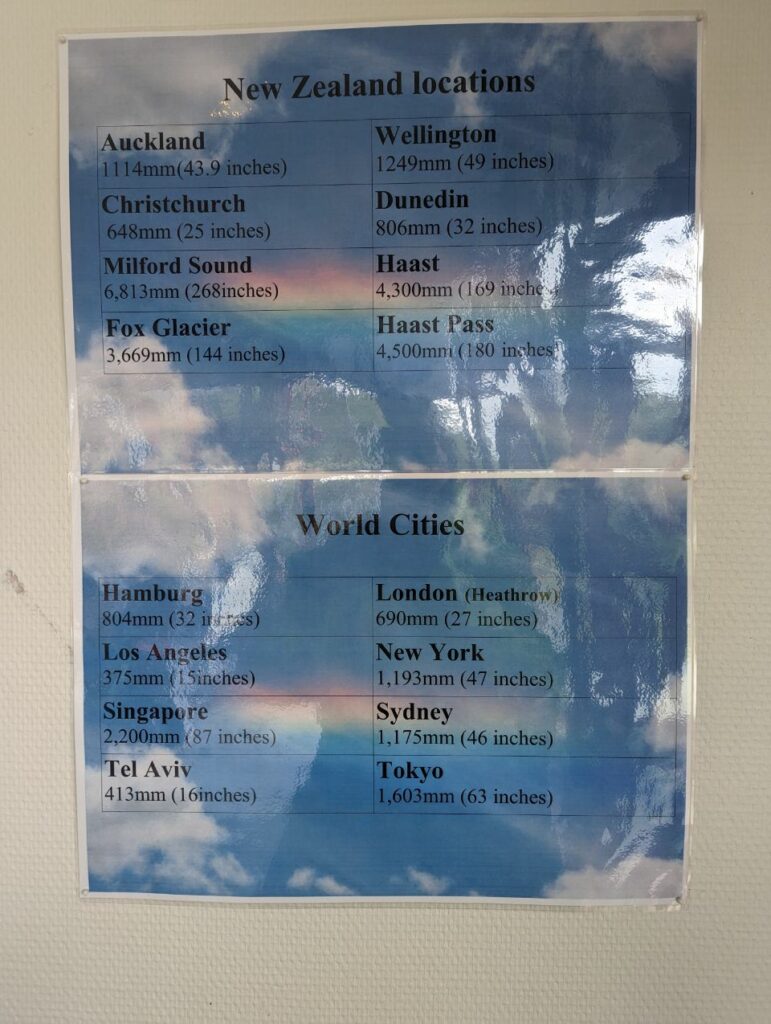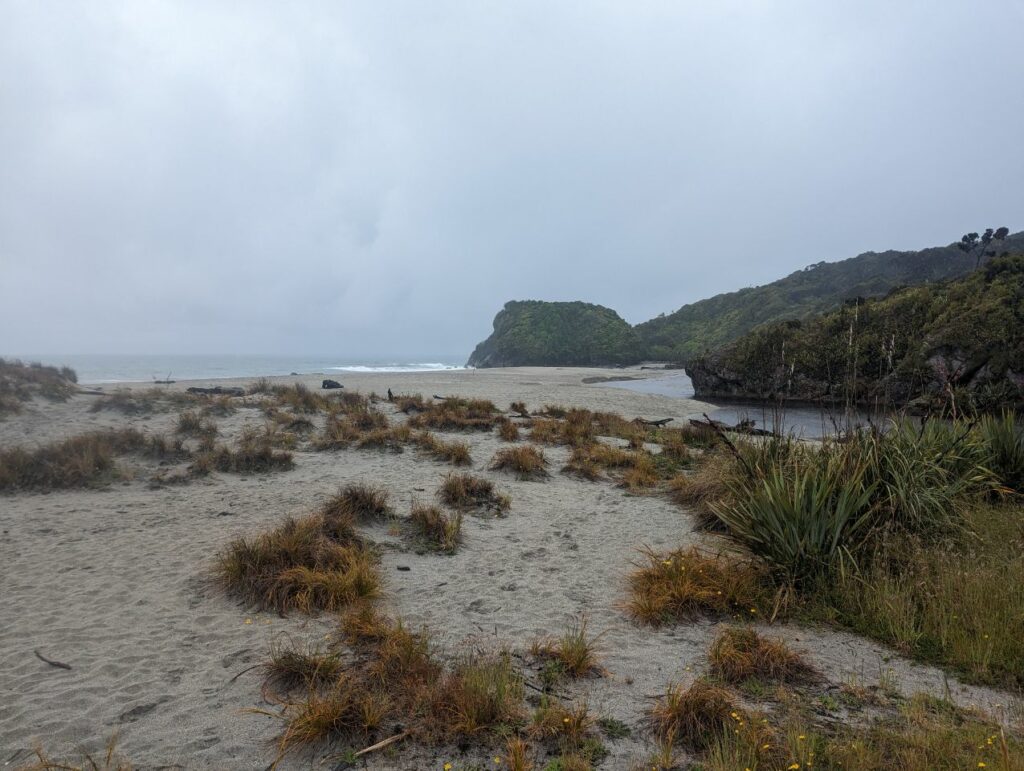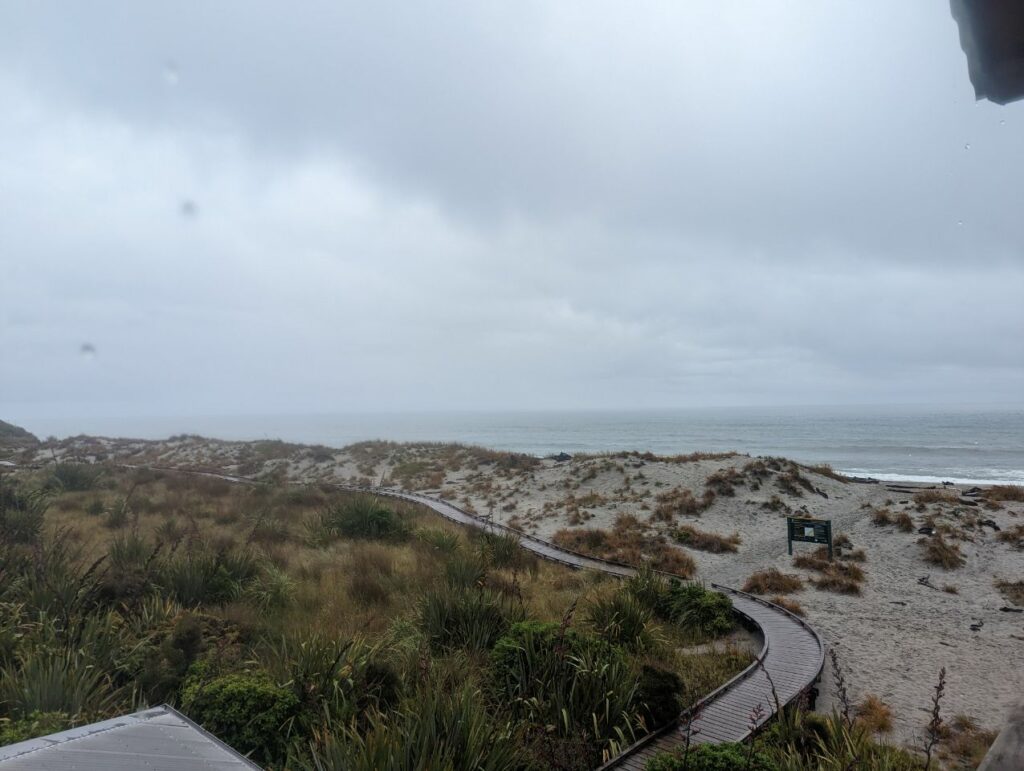Départ pour la grande ville de Haast !
On a une 50 nes de km mais une grande montée avec une belle vue tout en haut.
Pause déjeuner (15 min) au ship creek mais c’est infesté de Sandflies. Du coup on fait les 100 pas en dégustant rapidement nos sandwichs.
Arrivée vers 15 h à Haast on décide de redormir en dur au vue de la pluie qui nous a suivi toute la journée et du terrain de camping assez inondé.
On retrouve Annie au bar qui n’a pas pu continuer à cause d’un problème à son vélo et les néerlandais qu’on a rencontré deux jours avant aussi.
C’est toute une communauté de cyclistes qui se forme !
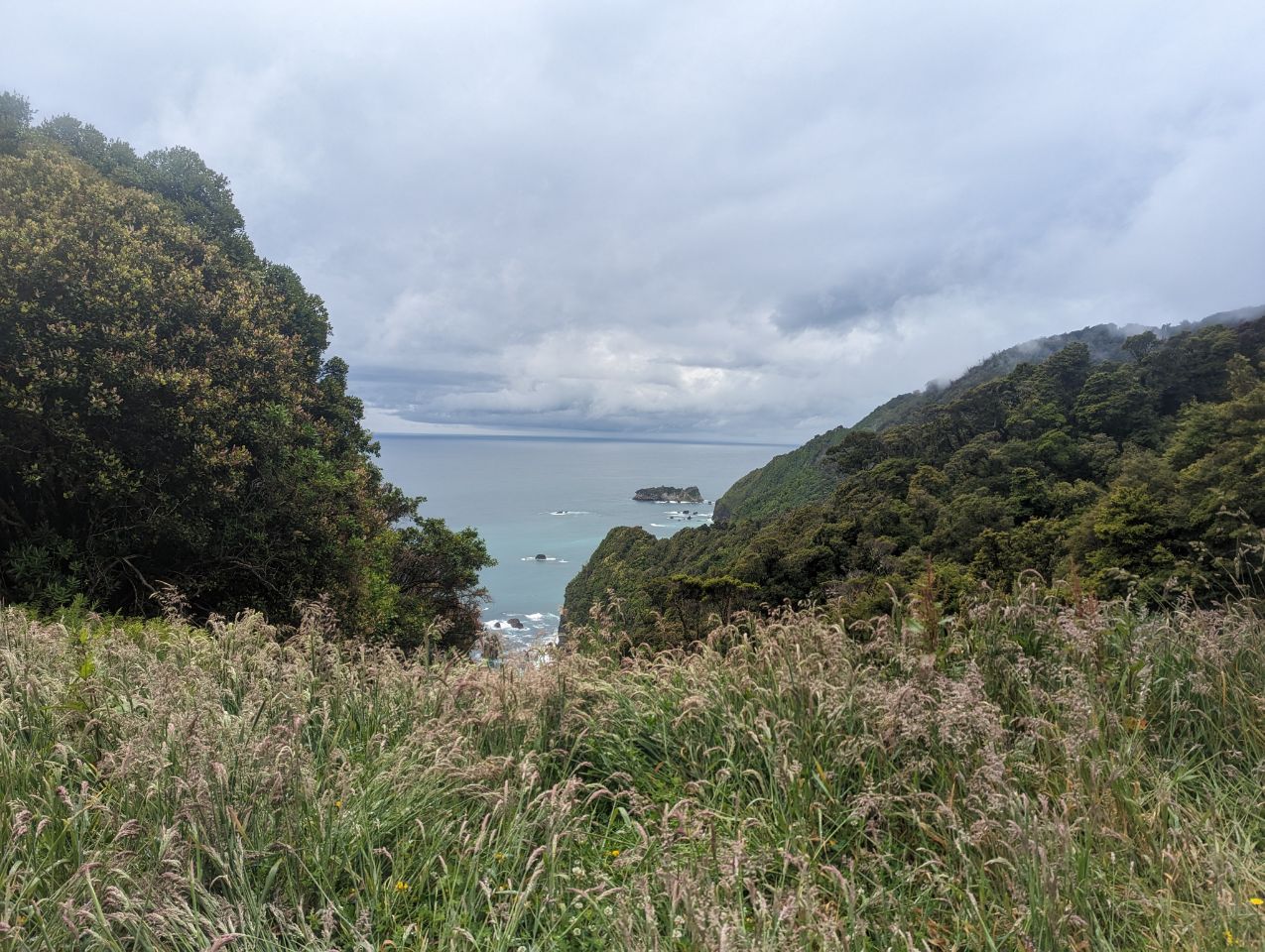
HAAST
16th December 2022
Haast is a small town in the Westland District territorial authority on the West Coast of New Zealand’s South Island. The Haast region covers over 2,500 square kilometres (970 sq mi).[2]
The region is named after Julius von Haast, a Prussian-born geologist instrumental in the early geological surveys of New Zealand.
The main economic activities in the Haast region are farming, fishing and tourism.
Lake Moeraki is 30 kilometres (19 mi) to the northeast, and the Haast Pass is 63 kilometres (39 mi) to the southeast by road. State Highway 6 passes through Haast Junction and just to the east of Haast township. The settlement of Okuru is located on the coast 12 kilometres (7.5 mi) south-west of Haast.[3][4]
The rarest subspecies of kiwi, the Haast tokoeka, is only found in the mountains of the Haast region.
History
European settlement of the area dates back to the 1870s. The remoteness of the area initially limited access to seagoing vessels, with some rough tracks from the north and east.
The present Haast township was originally a New Zealand Ministry of Works road construction camp, which expanded into a permanent township when the opening of the Haast Pass in 1962 made the region more accessible.[5] The road through the pass to Wānaka was upgraded in 1966.[6]
In 1990 the Haast area was included as part of a UNESCO World Heritage Site, giving international recognition as a location of significant natural value to Te Wahipounamu – The South West New Zealand World Heritage Area.[7]

